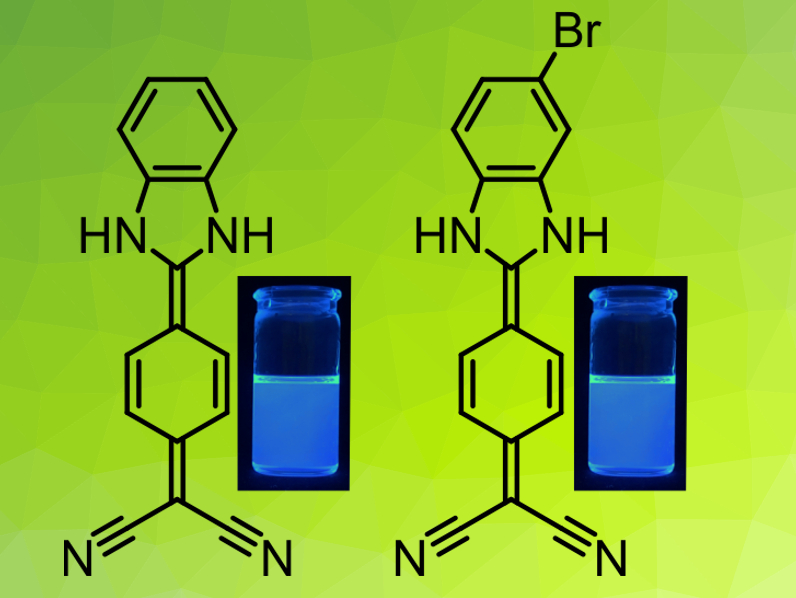Fluorescent dyes have applications, e.g., in light-emitting devices, light harvesting, and solar cells, or as labels in the life sciences. Understanding fluorescence and fluorescence quenching is important for the design of new fluorescent dyes. High stability, high dipole moments, and controlled redox properties are useful for these applications.
Beate Paulus, Siegfried Eigler, Freie Universität Berlin, Germany, Ute Resch‐Genger, Bundesanstalt für Materialforschung und -prüfung (BAM), Belin, Germany, and colleagues have synthesized diaminodicyanoquinone derivatives (examples pictured) that can be used as fluorescent dyes with quantum yields over 90 %. The dyes were synthesized from 7,7,8,8-tetracyanoquinodimethane (TCNQ) by reacting it with pyrrolidine and different diamines.
The researchers attribute the high fluorescence yields to restricted intramolecular rotations in benzene-substituted diaminodicyanoquinones (pictured), where the rotational barriers are high. According to the team, diaminodicyanoquinones are highly fluorescent dyes with high dipole moments. Their versatile chemical structure could allow their integration in new molecular architectures with unique photophysical features.
- Diaminodicyanoquinone – A Novel Class of Fluorescent Electron Acceptor Dyes with High Dipole Moments,
Philipp Rietsch, Felix Witte, Sebastian Sobottka, Gregor Germer, Alexander Becker, Arne Güttler, Biprajit Sarkar, Beate Paulus, Ute Resch-Genger, Siegfried Eigler,
Angew. Chem. Int. Ed. 2019.
https://doi.org/10.1002/anie.201903204




